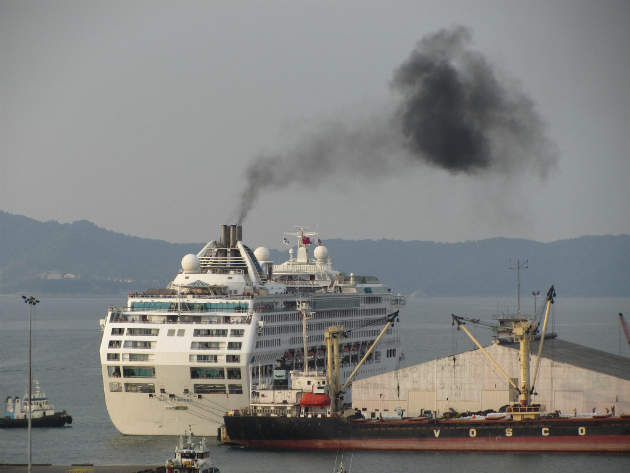
The regulation limiting emissions from ships has been rapidly tightening in recent years, with new rules from the International Maritime Organization (IMO) clamping down on greenhouse gas, NOx and SO2 releases from marine engines.
The Tier III regulation, which came into effect last year, brought down the limits of allowed NOx emissions from ships by 80% compared to previous rules.
One technology that is seen as highly successful at reducing NOx in combustion engines is the exhaust gas recirculation (EGR) system, used for smaller four-stroke diesel engines in the automotive sector since the 1970s.
But applying the technology to larger maritime engines has proven difficult until now.
In May, Kræn Vodder Nielsen, a young researcher from the Technical University of Denmark (DTU), together with MAN Diesel & Turbo (MDT), developed new software that makes it possible to bring EGR technology to ship engines, and limit emissions of NOx particles and black smoke.
Nielsen’s invention will be implemented in new marine engines from the end of this year.
Research yields results
Since 2016, a ship constructed on or after 1 January 2016 operating in North America and the United States Caribbean Sea Emission Control Areas (ECA), with an engine output of more than 130kW, has to comply with the Tier III regulation regarding NOx emissions.
For an engine designer, this means an 80% NOx-cycle value reduction compared to the Tier I level.
There is a variety of technical measures to meet the new standards, including dual fuel or pure gas engines, selective catalytic reduction, battery-powered or hybrid engines – as well as EGR.
The EGR technology, long proven when it comes to smaller vehicles, has been difficult to transfer to the maritime sector due to the presence of high sulphur content and a high content of solids.
According to a technical paper from MDT, “the 80% load cycle NOx reduction requirement means that internal engine optimisation is not sufficient – in other words: new technology is necessary.”
“Marine engines are very different,” Nielsen explained. “Sometimes they are two-stroke engines and not four-stroke engines, so it was not possible to just copy the approach from car engines. I focused instead on developing a new method that is better suited to marine engines.”
MDT has been working on developing EGR technology for ships since 2004, when it started a test program on a large two-stroke diesel test engine in Copenhagen. In 2010, a retrofit EGR system was installed on an engine on board the Alexander Maersk, a 1,100 TEU container vessel.
The company found that there was a need for greater use of advanced technology and decided to enter into a PhD collaboration with DTU.
A simple model
The development of new technology was born out of Nielsen’s PhD research, in cooperation with DTU Electrical Engineering and Linköping University.
According to Nielsen’s thesis, recirculation of exhaust gas to the cylinders lowers the oxygen availability and increases the heat capacity during combustion, which in turn leads to less formation of NOx.
His aim was to develop EGR technology for large two-stroke engines, while still eliminating smoke formation.
Early in the process, Nielsen sailed on a large container ship to get to grips with the practical application of his research.
“I found out that the academic methods for development of the control of a marine engine with EGR technology at that time were too complex,” he said.
“Therefore, it quickly became clear to me that I had to develop a simple model that includes only the critical part of the system that we wanted to improve. From there, we developed a new control that coordinates the recirculation and fuel injection without requiring too much tuning of other parts of the system.”
Nielsen is now working with MDT to finalise his software so that it can be implemented in new marine engines starting from the end of this year.
“Initially, I will go out and install it on the ships, but in the long term the plan is that I will write a guide so that shipbuilders and crews can fine-tune the system themselves,” he said.



